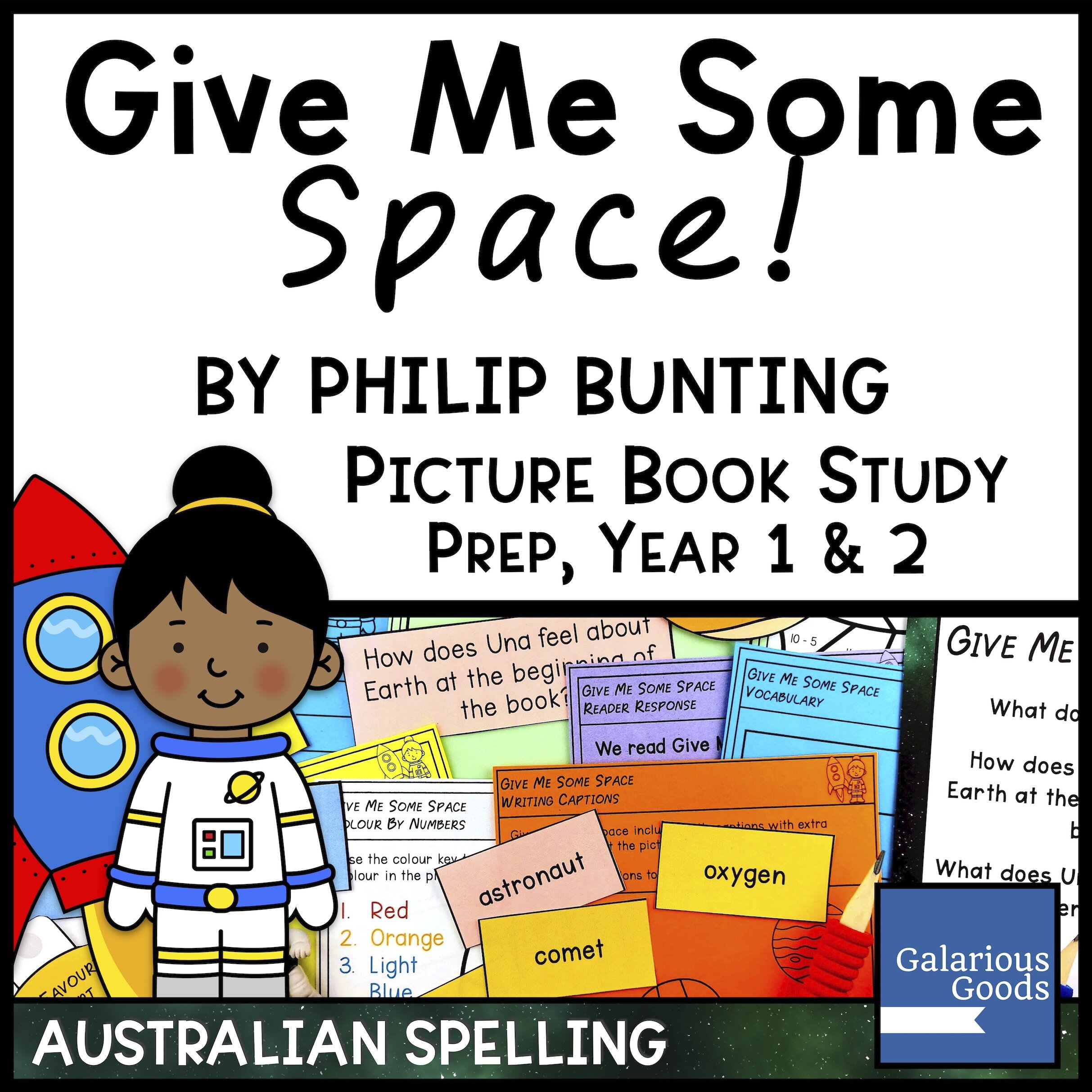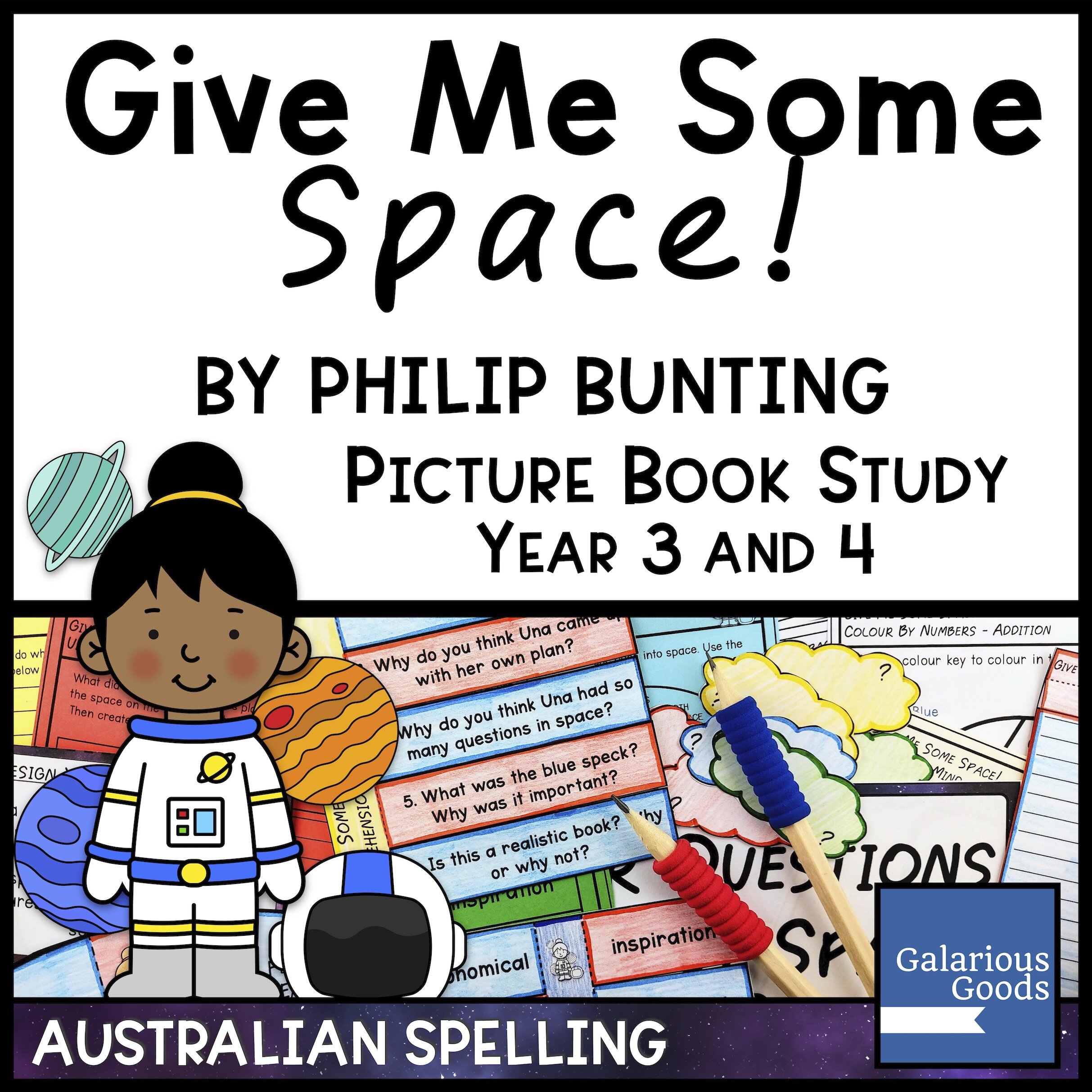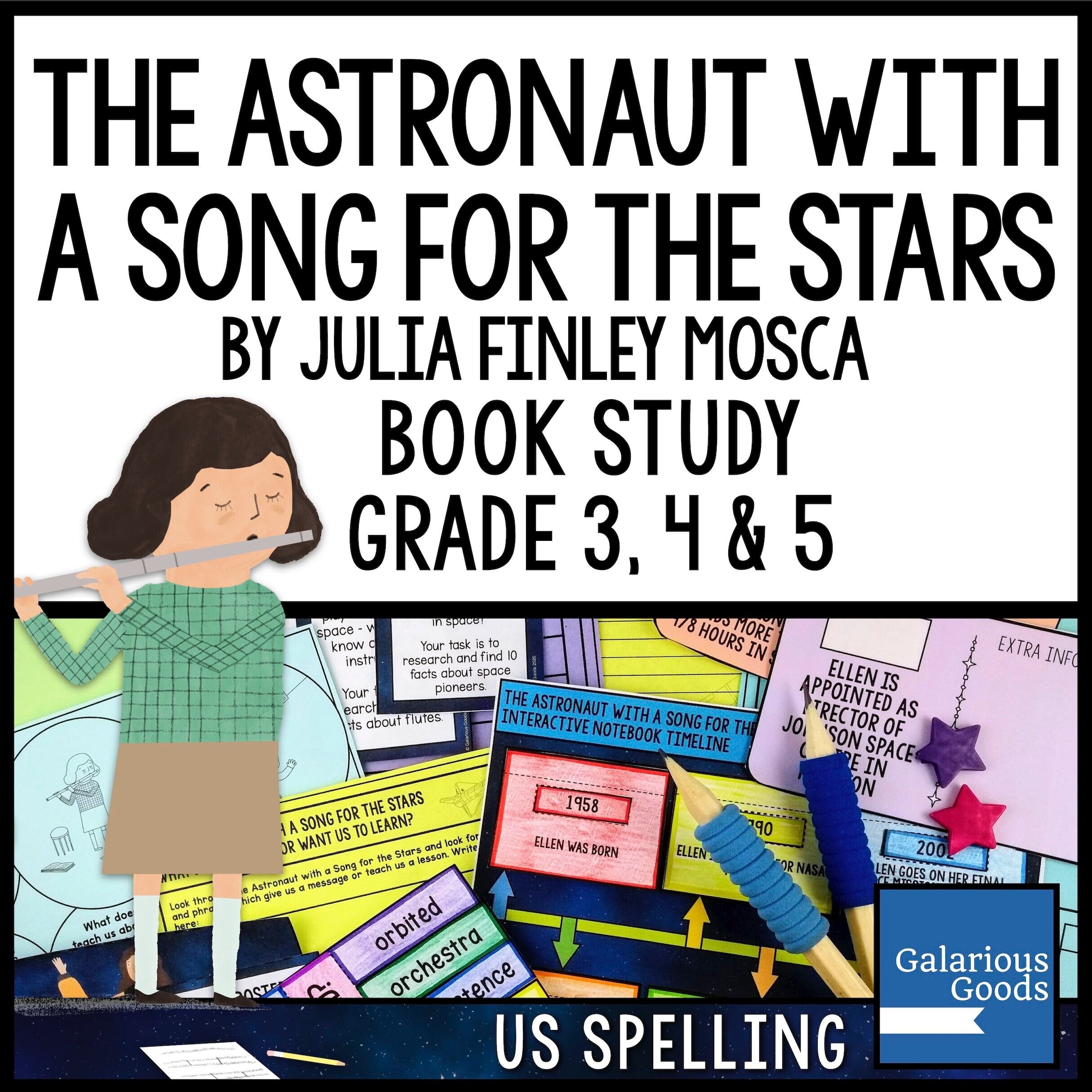4 Learning Activities for Give Me Some Space!
/2021’s National Simultaneous Storytime book is the lovely Give Me Some Space! by Philip Bunting. This is the story of Una, a space-obsessed girl who wants to escape the everydayness of her everyday life to explore the solar system. But what learning can we do with these books? Here’s five ideas for your classroom
1. Research Astronauts
Researching astronauts sounds like a rather humdrum activity, but this is a great way for students to develop an important skill - developing research questions. Astronauts tend to spark a lot of curiosity - how do you become an astronaut? What does it feel like to travel into space? And of course, everyone’s favourite - how do you go to the toilet in space?
Younger students can start by just brainstorming everything they’d like to know about space. With the guidance of the teacher, they may like to pick 2 or 3 of their questions and explore different places they could find answers, like interviews with astronauts, videos about astronauts and books about space exploration.
As students get older, they can begin to group their questions, looking for broader research topics. They might like to investigate life in space, astronauts in history or the jobs of astronauts. Students could work in teams to each research a question, then come together to share their findings.
For older students, you can work on developing more sophisticated research questions. How do you become an astronaut? might become “How has astronaut selection changed over history?” What does it feel like to travel into space might become “How do humans feel about earth when they see it from space?”
2. Explore food in unusual circumstances (and plan a space inspired menu)
Una’s picnic is an important part of Give Me Some Space! as she sits on the Kuiper Belt and eats her cheese sandwiches and astronaut ice cream. This also gives students the opportunity to ask an all important question - what do you eat in space?
For younger students this can be a really simple activity of looking at some of the food astronauts eat in space, exploring some of the problems of eating in space and designing their own ‘space menu’.
Older primary students might also like to look at the history of food in space and how it changed as space exploration changed. They could also compare this to food in other unusual situations, such as food in Antarctica or food on long sea voyages. Additionally they might like to investigate some of the technology involved in preparing food for space and what tools would make eating in space easier.
Looking for more information? Try
https://airandspace.si.edu/exhibitions/apollo-to-the-moon/online/astronaut-life/food-in-space.cfm
https://www.nasa.gov/audience/forstudents/postsecondary/features/F_Food_for_Space_Flight.html
3. Create space inspired miniatures
In Give Me Some Space! Una uses materials from around her house to create her space exploration tools. But what about using regular items to create tiny things.
Students can use a range of everyday and craft materials to create miniature items or scenes inspired by the book. They might like to create a tiny rocket or astronaut, or imagine what the inside of a space habitat might look like.
Older students can explore ways they can use their miniatures to create stories. One way they can do this is by making their own stop motion animations - taking photos, moving items slightly and taking another photo. Then they put these photos together to make an animation.
4. Explore a space inspired dance
Space is such a great topic to pair with dance, because of the number of elements which require movement.
Younger students can look at how a rocket takes off or how a moon buggy moves across the surface of the moon and try to recreate those moves with their bodies. For extra fun, they might like to explore all the different ways a space alien might move
Middle primary students might like to imagine what it feels like to move with no gravity or lower gravity and how they could show that in a regular gravity situation on earth.
Older students might like to explore some space themed music, such as Gustav Holst’s The Planets, David Bowie’s Space Oddity (especially the version by Chris Hadfield played in space!) or Josef Strauss’ Music of the Spheres and explore how they could move through along with these pieces of music. Students could work individually, in pairs or in groups to choreograph movement sequences which fit to these pieces of music.
















